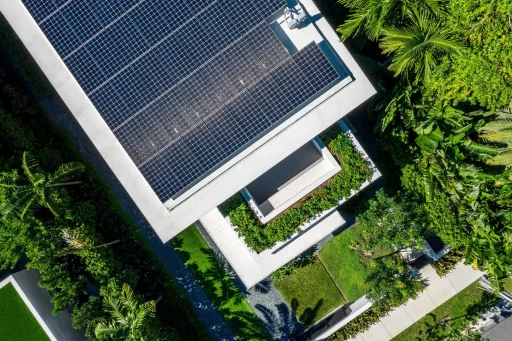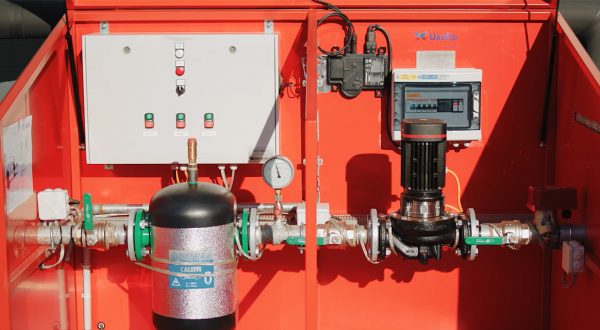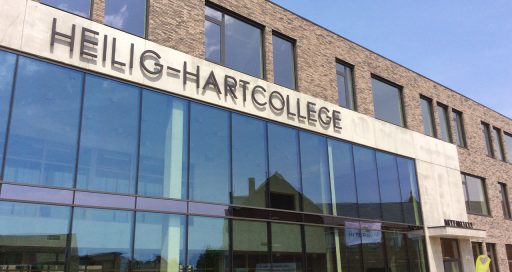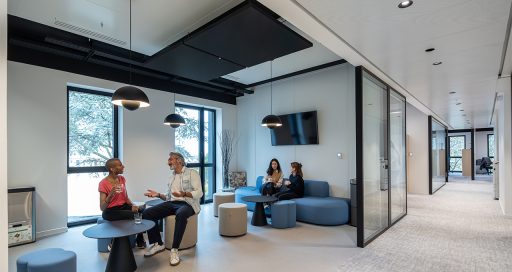What Solutions for the Environmental Transition of Buildings?
Reading time: 6 min
How can the environmental transition of buildings be accelerated? VINCI Energies Building Solutions has published a white paper intended as both an educational tool and a manifesto for companies and professionals in the real estate sector.

As a key indicator of economic health, the building sector faces multiple challenges: climate, energy, social, demographic… This central role draws significant attention from public policies, especially since, after transportation, it remains the fourth-largest emitter of greenhouse gases in Europe, accounting for 36% of total CO2 emissions and 40% of the continent’s energy consumption.
Regarding commercial-residential buildings, the trajectory set by the European Green deal, has set a target to reduce net greenhouse gas emissions by at least 55% by 2030 and achieve full decarbonisation by 2050.
The real estate industry has already made significant efforts. Between 2005 and 2021 Greenhouse gas emissions from EU buildings decreased by 31%. There is still much room for improvement. According to the IPCC, the sector, along with transportation, has the most substantial potential impact on global mitigation (66% by 2050), far ahead of food and industry.
This assigns the entire industry a leading role in accelerating the transformation. Building stakeholders are, of course, urged to align their professions and activities with an extensive regulatory timeline. They must also respond to increasing pressure from stakeholders: clients, partners, professional organizations, associations, occupants, and employees.
A General Interest Approach
The message is clear: multiply strategies for sustainability. To encourage companies to engage in such efforts and support them in their choices, VINCI Energies Building Solutions, VINCI Energies’ network of business units dedicated to buildings, has published Solutions for the Environmental Transition of Buildings, a white paper for all industry stakeholders.
“Our ambition is to support our clients, partners, and suppliers in addressing this complex issue and, more broadly, to help accelerate the dynamics towards sustainable building development in a truly collective approach,” says Lydie Marchand, Head of Marketing and Communications at VINCI Energies Building Solutions.
“The environmental transition of buildings is our daily focus.”
As the second-largest business line of VINCI Energies, with a revenue of €5.4 billion, VINCI Energies Building Solutions unites a network of 530 companies across Europe specializing in engineering and works, operation, maintenance, and facility management.
“Our job is to propose and develop tailored solutions for our clients within a clearly defined framework of sustainability,” says Philippe Conus, Director of VINCI Energies Building Solutions. “The environmental transition of buildings is our daily focus.”
The intention of this white paper, he continues, is to “present the major challenges and key issues facing the industry, outline the actions underpinning the shift towards sustainable, comfortable, and energy-efficient buildings, and provide information and advice to encourage the acceleration of our activities and professions towards an environmental transformation. This is done openly, sharing our knowledge and achievements.”
Decarbonization, But Not Only
It is estimated that 80% of the buildings that will be occupied in 2050 already exist today. The main focus is clearly on the existing stock. “Undertaking the transition of buildings primarily involves transforming and renovating the existing stock for the coming years,” summarizes Stéphane BRETIN, Energy and Expertise Manager at VINCI Energies Building Solutions.
Today, the primary environmental focus of the sector and, consequently, the main orientation of the actions undertaken, is the carbon footprint of buildings. Their decarbonization mainly draws from the methodology of the ACT (Assessing Low Carbon Transition) developed by the Carbon Disclosure Project (CDP) and the French environment and energy agency (ADEME) adapted to the specific characteristics and constraints of real estate (see inset).
However, decarbonization is not the only lever for accelerating the transformation. “Issues related to water and indoor air quality for the occupants of commercial buildings will soon become increasingly important in defining construction and operation strategies and in the development of expertise,” comments Stéphane Bretin (see: “Water Footprint, the New Challenge for Commercial Real Estate” and “Indoor Air Quality, a Health Issue for Real Estate”).
The majority of Europe’s public water supply is used in buildings, accounting for around 21% of total abstracted water (World Green Building Council). It is therefore essential to both quantify rigorous resource conservation targets and define innovative energy performance actions: consumption management, rainwater harvesting, and leak prevention.
Decarbonizing energy and its uses, decarbonizing equipment and materials, protecting natural resources, and adapting to climate change are all pathways to environmental transition that require expertise, professions, technologies, tools, and proven cooperation.
Spanning 45 pages of context, data, infographics, advice, and case studies, VINCI Energies Building Solutions’ white paper is intended as both an educational tool and a manifesto for a sustainable transformation of the building industry.
The Four Steps to Decarbonization
Adapted to the specific characteristics and constraints of real estate, the ACT (Assessing Low Carbon Transition) process methodology by ADEME comprises four steps:
- Analyzing and measuring emission sources
- Developing a low-carbon action plan (which can prioritize the most significant sources and then schedule actions based on the criticality of the diagnostics)
- Implementing and monitoring operations through, for example, energy performance contracts, comprehensive energy performance contracts, or low-carbon performance contracts
- Monitoring actions and evaluating their effectiveness
Key Figures
36% Share of the building sector in CO2 emissions in Europe
40% Share of building sector in energy consumption in Europe
55% Target for reducing greenhouse gas emissions by 2030 to achieve full decarbonisation
80% of the buildings that will be occupied in 2050 already exist
10/17/2024
Learn more:
Download the White Paper





